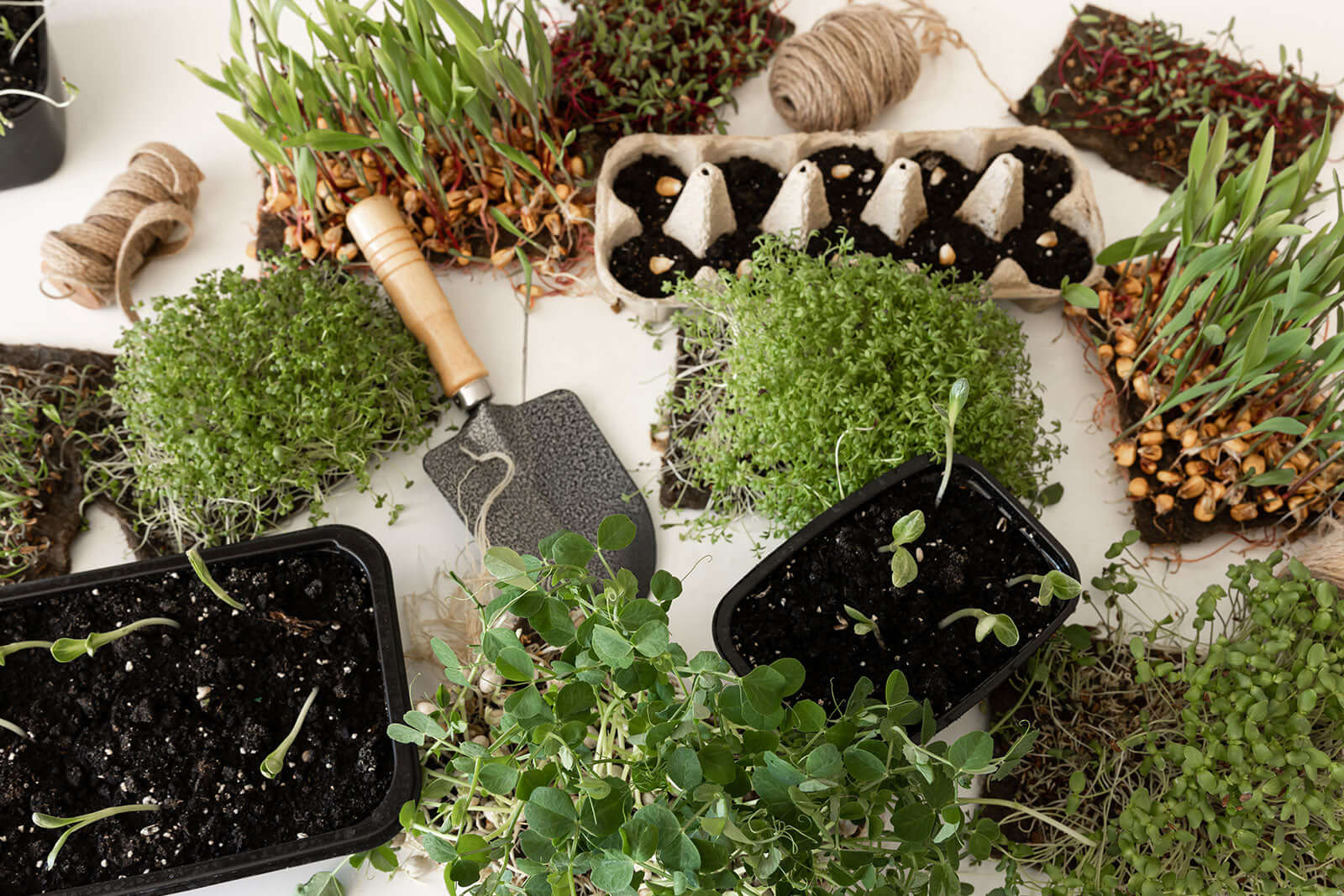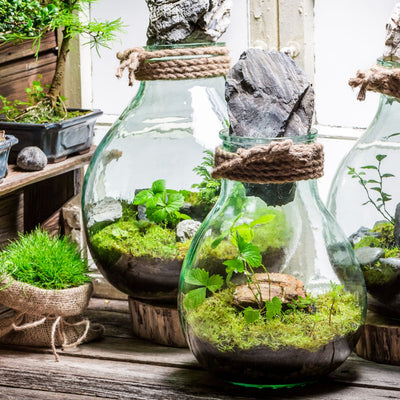Terrarium kits are a fantastic way to bring a touch of nature into your home. Whether you have a green thumb or are a beginner looking to explore gardening, planting terrarium kits can be an enjoyable and rewarding experience. In this comprehensive guide, we will walk you through the process of planting a terrarium kit and provide tips on how to care for it to ensure its success in the first year.
Choosing a Terrarium Kit
When it comes to choosing a terrarium kit, there are a few factors to consider. Look for kits that provide a variety of plants, rocks, and other decorative elements. One recommended source is Tennessee Nursery, which offers a Terrarium Garden Kit with fresh turkey tails, rocks, lichens, mosses, and plants collected from the mountains and hills of middle Tennessee.
When selecting the size of your terrarium kit, consider the available space in your home and the type of plants you want to grow. Smaller plant terrariums are ideal for succulents and cacti ( TIP: cacti are known for their ability to store water in their leaves, making them perfect for succulent terrariums). Larger terrariums can accommodate a variety of tropical plants.
Additionally, consider the design of the container. Terrariums are typically made of glass or clear plastic to allow light in and create a visually appealing display. Some kits may come with containers, while others may provide plants and materials to create your own terrarium.
Setting Up Your Terrarium Kit
Once you have your terrarium kit, follow these steps to set it up:
1. Select the Right Container
Choose a glass container with a lid to create a mini greenhouse effect. This will help create the ideal microclimate for the plants. The container should be clean and free from any residues that could harm the plants.
2. Prepare the Base Layer
Add a layer of small rocks or pebbles to the bottom of the container. This layer serves as drainage and prevents water from pooling around the roots. The rocks or pebbles should cover about one to two inches of the container's base.
3. Add Activated Charcoal
Place a thin layer of activated charcoal on top of the rocks. This helps to keep the terrarium free from odors and prevents mold and bacteria growth. Activated charcoal can be found at gardening or pet stores.
4. Add Soil
Add a layer of potting soil suitable for tropical plants. Ensure it is moist but not waterlogged. The depth of the soil layer will depend on the size of the container and the types of plants you plan to include. Aim to have a soil layer of about two to three inches.
5. Arrange Your Plants
Now it's time to arrange the plants. Place taller plants towards the back and shorter ones towards the front. Consider mixing different textures, colors, and heights for an aesthetically pleasing display. Ensure there is enough space between the plants to allow for growth and prevent overcrowding.
Before placing the plants in the terrarium, gently remove them from their nursery pots and loosen the roots. This helps the plants adapt to the new environment and encourages healthy growth. Arrange the plants, and gently press the soil around the roots to secure them in place.
6. Add Decorative Elements
Enhance the beauty of your terrarium by adding decorative elements such as small figurines, stones, or driftwood. Get creative and make it your own! These decorative elements can add visual interest and provide a natural-looking habitat for the plants. Place them strategically around the terrarium, creating focal points and a sense of harmony.
Terrarium Care Tips
To keep your terrarium thriving in its first year, follow these care tips.
Lighting
Terrariums thrive in bright, indirect light. Avoid placing them in direct sunlight as it can cause excessive heat and damage the plants. Place them near a window where they can receive ample light without direct exposure. If natural light is limited, supplemental artificial light can be used to provide the necessary intensity.
Monitor the light conditions regularly and adjust the terrarium's position accordingly to ensure the plants receive the optimal amount of light. Different plants have varying light requirements, so research the specific needs of the plants in your terrarium to ensure they receive the right amount of light.
Watering
Watering requirements vary depending on the type of plants in your terrarium. Generally, a light spritzing once every 1-2 weeks should be sufficient. Be careful not to overwater as it can lead to root rot. Monitor the moisture level by checking the soil. If it feels dry, it's time to water.
When watering, use a spray bottle or misting wand to lightly moisten the soil surface. Avoid soaking the soil or allowing water to accumulate at the bottom of the container. Over time, you will develop a watering routine based on the individual needs of your terrarium.
Ventilation
While terrariums are designed to create a self-contained ecosystem, they still require some airflow. Open the lid occasionally to allow fresh air to circulate and prevent the buildup of excess moisture. This will help maintain a healthy balance inside the terrarium and prevent the growth of mold or fungi.
Regularly check the terrarium for any signs of condensation on the glass. Excessive condensation may indicate inadequate ventilation and the need to open the lid for a longer period.
Pruning and Maintenance
Regularly inspect your terrarium for any dead or yellowing leaves. Trim them off to maintain the overall health and appearance of the plants. If any plant outgrows the terrarium, consider replanting or pruning it to prevent overcrowding. Additionally, remove any fallen leaves or debris from the terrarium to prevent decay and maintain a clean and attractive appearance.
Monitor temperature and humidity
Terrariums thrive in temperatures between 65-75°F (18-24°C) with moderate humidity levels. Avoid exposing them to extreme temperatures or drafts. Drastic temperature changes can stress the plants and lead to damage or even death.
Monitor the terrarium's environment regularly and make adjustments if necessary. If the temperature becomes too high, consider moving the terrarium to a cooler location or providing shade during peak sunlight hours. In contrast, if the terrarium becomes too cold, consider adding a heat mat or moving it to a warmer area of your home.
Maintaining the right humidity level is also crucial for terrariums. Tropical plants typically prefer a moderate to high-humidity environment, which can be achieved by lightly misting the plants or placing a humidity tray filled with water near the terrarium. Regularly monitor the humidity level and adjust as needed to ensure the health and proper growth of the plants.
Planting Terrarium Kits With TN Nursery
If you are looking to bring a touch of nature into your home, a terrarium plant kit can be an excellent choice. We offer a Terrarium Garden Kit that includes everything you need to create your indoor oasis. This kit provides fresh turkey tails, rocks, lichens, mosses, and plants collected from the mountains and hills of middle Tennessee.
With our Terrarium Garden Kit, you can create a visually stunning indoor garden that brings joy and tranquility to your home. The kit provides all the necessary materials, including a glass container, potting soil, activated charcoal, and decorative elements.
Choose our Terrarium Garden Kit and create your indoor oasis today!



